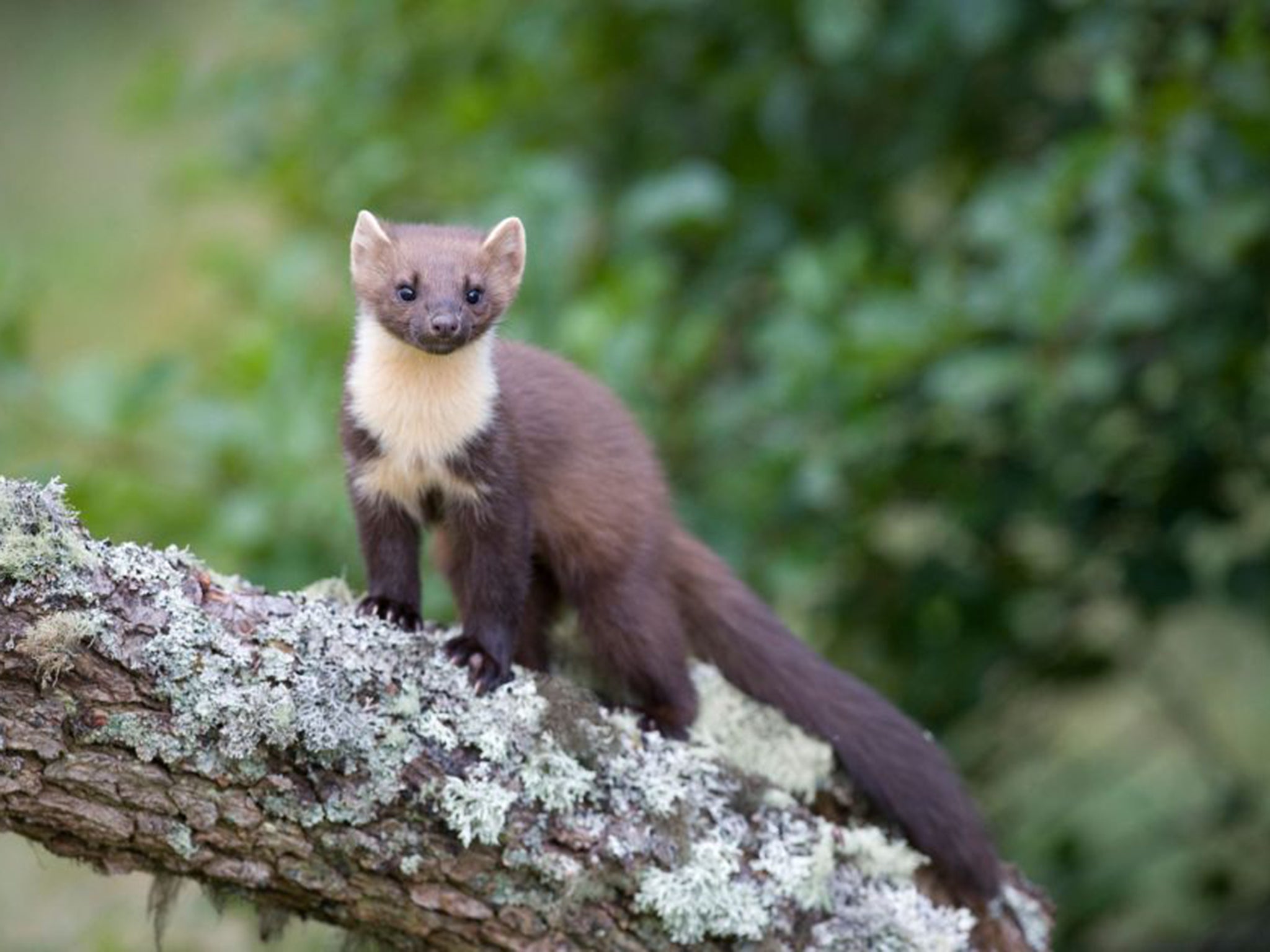Natures Studies: My joy at witnessing the return of a beautiful carnivore
- Pine martens from the thriving Scottish population have been translocated to mid-Wales
- It is Britain’s first ever carnivore recovery scheme on a nationwide scale

Having spent almost 20 years recording the miserable, heartbreaking decline of Britain’s wildlife, I find I have to pinch myself when something comes along to reverse the trend. But such is the case today.
Quietly, with no fuss, a major corner has been turned in the restoration of Britain’s dreadfully impoverished biodiversity: pine martens are being reintroduced to Wales, and may eventually be restored to England, too. For decades, the loveliest of our native carnivores has been hanging on in such tiny numbers that until recently it was not certain it existed at all: it was teetering on the verge of extinction in Wales.
But in the last fortnight, animals from the thriving Scottish population have been translocated to mid-Wales, and the forests of the Cambrian mountains, and last week The Independent was given an exclusive view of the project. Five have already been released in the remote wooded valleys east of Devil’s Bridge, and over the coming weeks 15 more will follow; while next year another 20 will join them, with the aim of creating a Welsh pine marten population that is healthy and self-sustaining.
If the present two-year pilot project succeeds, it will be rolled out to include further releases in England also, at sites ranging potentially from the Lake District to the Forest of Dean.
This is a landmark moment: it is Britain’s first ever carnivore recovery scheme on a nationwide scale, and as such, a notable step forward in restoring the biodiversity that has been so degraded that the British Isles are now easily the poorest area for wildlife in Europe.
The pine marten itself, the sinuously beautiful, tree-dwelling relative of the stoat, the weasel and the otter, could stand for all of it: once present right across the country, it was persecuted out of existence in most of Britain until its last stronghold was the north-west highlands. But full protection since 1981 has allowed it to spread back over much of the Scottish landscape, and the aim now is to bring it back south of the border.
The project to do so is headed by the Vincent Wildlife Trust (VWT), the admirable small charity which has led the way on British mammal conservation research in recent years.
After a two-year feasibility study of potential release sites, the area of the Cambrian mountains was selected by the VWT as offering the best hope of a successful reintroduction, not least because it was largely devoid of public roads – the possibility of being run over by motor vehicles being one of the biggest risks for the animals. They are being captured under licence on the public forest estate in the Scottish highlands and fitted with radio collars so they can be tracked. The releases began two weeks ago with four animals set free; a fifth, named Johnny, was released on Sunday night, and on Friday I visited him in his release pen deep in the woodlands, in an area of birches, heather and bilberries. He is a splendid animal, large, confident and charismatic.
I was thrilled, not only to be in his presence, but to realise what an important milestone this is in the reversing of Britain’s catastrophic wildlife decline. For the way forward is clearly to seek to restore what we once had, not just conserve the remnants that are left.
The VWT and its partners have been very careful to secure local support for the project, which is likely to become a significant tourist attraction in the years to come, echoing the red kites which once drew thousands of birdwatchers to the area when it was their only British home.
“I think they’re terrific animals,” said Martin Williams, proprietor of the Hafod Hotel in Devil’s Bridge. Martin, I couldn’t agree more.
Join our commenting forum
Join thought-provoking conversations, follow other Independent readers and see their replies
Comments
Bookmark popover
Removed from bookmarks